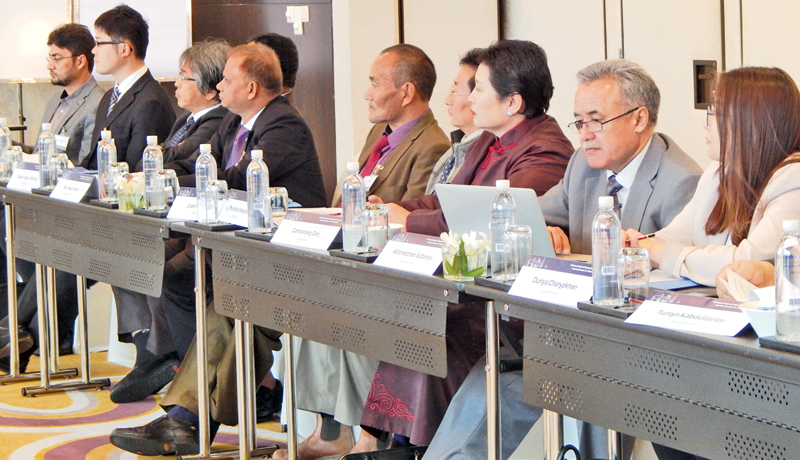Veterinary officers, animal health experts and scientists from 12 countries in the Asian region, converged in Colombo to renew commitments and take action against any possible outbreak of rinderpest, a contagious disease that, throughout history, has killed millions of livestock. Over 30 experts attended a Rinderpest Tabletop Exercise conducted by the Food and Agriculture Organisation of the United Nations (FAO) and the World Organisation for Animal Health (OIE) in partnership with the Rural Economy Ministry.
The exercise focused on detection and response to a simulated scenario of a rinderpest outbreak in Asia, the sharing of national contingency plans and testing the newly-developed Global Rinderpest Action Plan (GRAP) for national, regional and international co-ordination, in order to prevent a potential rinderpest emergency.
“Rinderpest, although declared eradicated by FAO and OIE in 2011, remains a priority, as stocks of the rinderpest virus that are currently held in laboratories around the world present a significant biological threat,” FAO representative of Sri Lanka and Maldives Nina Brandstrup said. “However, it is not yet time to end concerns regarding rinderpest. Not until the risk of a potential recurrence of the virus—accidental or deliberate—is near minimum.”
The second disease to be eradicated globally after smallpox, rinderpest is also the first animal disease to be eradicated. However, since stocks of the virus are present in several laboratories, the destruction of the virus or its secure transfer (sequestration) to FAO-OIE approved Rinderpest Holding Facilities are encouraged. Furthermore, a Global Rinderpest Action Plan was introduced to ensure continued global freedom from rinderpest by outlining the actions necessary to prepare, prevent, respond and recover from a rinderpest outbreak. The Regional Rinderpest Tabletop Exercise held in Colombo, which followed a similar Exercise for the East African region in Nairobi, Kenya, saw countries working to improve and harmonise national and regional contingency plans to GRAP. Rome FAO Headquarters Rinderpest Animal Production and Health Division Co-secretariat Senior Animal Health Officer Dr. Samia Metwally said that the most important finding from the tabletop exercise was that countries do not remember rinderpest and what the disease looked like. “So in case of a re-emergence, the detection of this disease in the Asian region may take a long time and it will be too late to control it,” she added. Dr. Metwally further said most countries were against slaughtering vaccinated animals to gain freedom from disease, if rinderpest resurfaces. Discussion surrounding the current OIE Terrestrial Code for the recovery of freedom from rinderpest highlighted that recovery could be achieved without slaughtering vaccinated animals. OIE Chargée de Mission Dr. Mariana Marrana said the OIE Terrestrial Code could be reviewed upon request from the membership.
“Should there be any outbreak of the virus, there needs to be adequate surveillance systems in operation and continuous vigilance maintained, enabling the disease to be detected early and managed promptly,” said Ministry of Rural Economy Secretary Renuka Ekanayake. She reiterated that every country and region should have their contingency plans tested by simulated scenarios and tabletop exercises.
It was also noted that Sri Lanka had experienced the impact of rinderpest on livelihood and food security during wars and the importation of cattle. The last case of rinderpest was in 1987 and Sri Lanka declared freedom from the disease in 1994.
Human population is expected to rise to 9.6 billion by 2050 and many of these people are expected to live in urban and peri-urban areas. With rising urbanisation and incomes, food consumption patterns are likely to change and the demand for livestock products would also rise. “Currently, livestock contributes 43 percent of world agricultural Gross Domestic Product (GDP) and its value exceeds USD 740 billion,” said Brandstrup. “This creates an income opportunity for producers, not least for poor producers. But for them to benefit, their investment in production must be protected,” she added.
Taking all possible measures to prevent high-impact transboundary animal diseases such as rinderpest from re-emerging, would ensure improved global food security, strengthen household economies and increase livestock investor confidence and livestock trade.



Add new comment